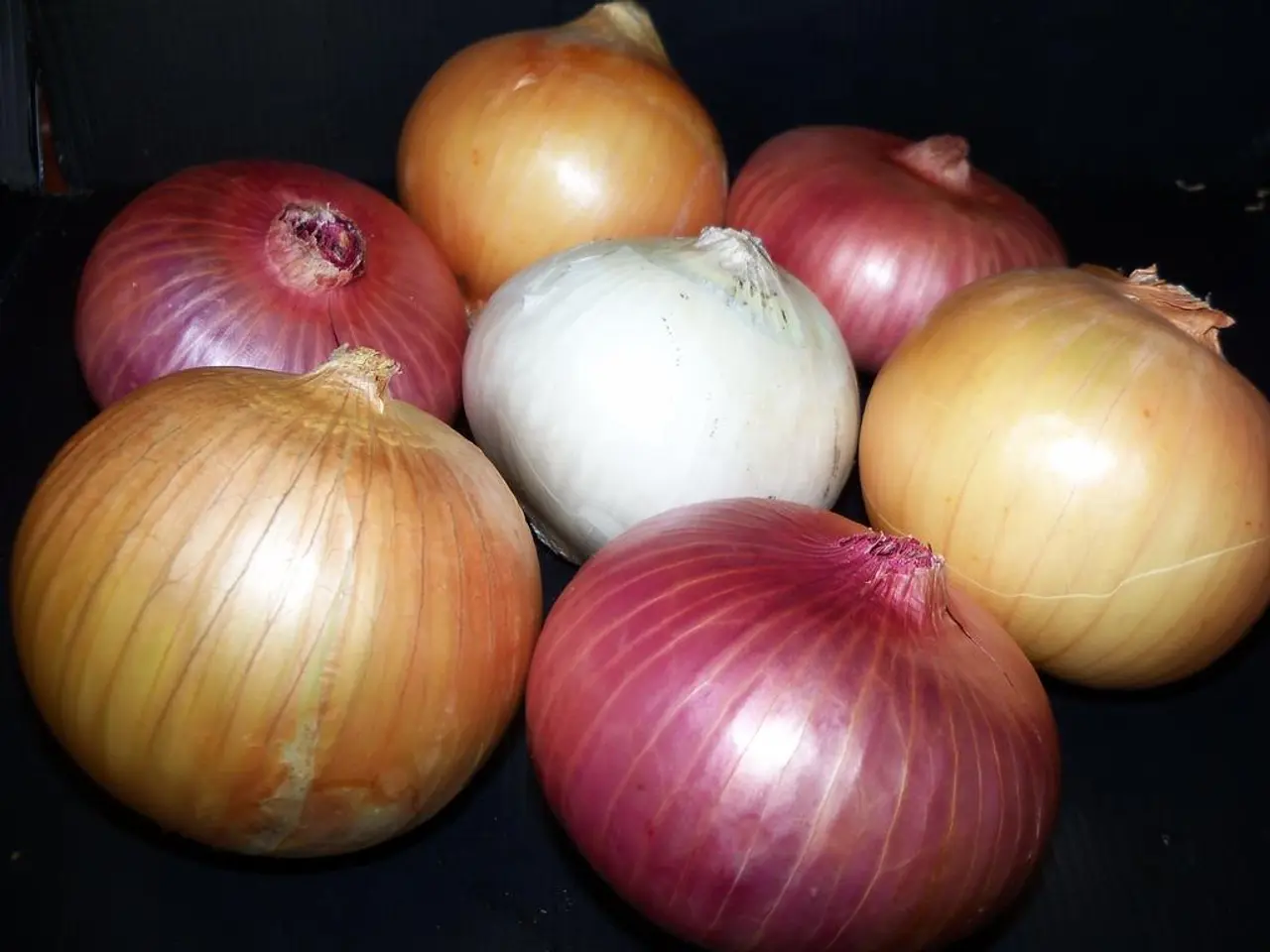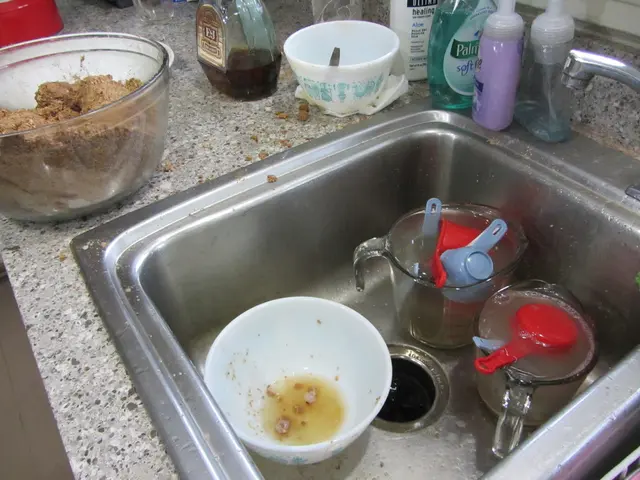Mastering Garlic Cultivation: Expert Advice on Planting, Tending, and Harvesting Garlic Plants
Garlic (Allium sativum) is a versatile crop that can be cultivated in vegetable garden beds and containers. To achieve optimal results, it's essential to understand the unique growth needs of the two main types of garlic: softneck and hardneck varieties.
Hardneck garlic thrives in regions with cold winters and requires well-drained, rich soil with good exposure to cold. Cold exposure is crucial for proper bulb development and scape formation, the flower stalk typical of hardneck varieties. Plant cloves in fall (6 to 8 weeks before the first frost) or early spring in raised beds or garden beds that receive 6-12+ hours of direct sunlight daily. Space cloves about 6 inches apart, taking care not to damage the papery covering, which protects the cloves. Regularly remove garlic scapes once they form to promote larger bulb growth and enhance flavor. Maintain consistent moisture but avoid waterlogging, and control weeds and mulch around plants for moisture retention and soil health. Harvest when lower leaves start browning, and cure garlic in a shaded, well-ventilated area for flavor and storage longevity. Hardneck garlic has larger cloves but stores for only a few months, so use them relatively quickly.
On the other hand, softneck garlic prefers milder winters and soil that retains moisture but also drains well to prevent rot. Plant cloves in fall, similar to hardneck, but in milder climates, softneck can also be planted in late winter or early spring. Softneck varieties do not produce scapes, so there's no need to remove flower stalks. Require consistent moisture and protection from extreme cold, and mulch and weeding keep soil healthy and reduce competition for nutrients. Harvest softneck garlic when leaves start to yellow and brown, as it has more but smaller cloves than hardneck and stores longer, often up to 9 months.
For container gardening, use a large, well-draining container with high-quality soil rich in organic matter. Choose appropriate varieties: softneck garlic tends to be more suited for containers due to milder climate preferences and smaller plant size. Ensure the container receives at least 6 hours of sunlight daily. Space cloves sufficiently within the container to avoid crowding.
To ensure success in growing garlic, conduct soil testing and amend soils with organic fertilizers such as compost, blood meal, or fish meal for nutrient boost. Provide spacing of approximately 6 inches to allow for bulb development and airflow. Control weeds and mulch around plants for moisture retention and soil health. Harvest before bulbs split for the best clove size and storage quality.
Growing both softneck and hardneck garlic ensures a supply of garlic all year. When harvesting, aim for a warm summer day. Once the plants grow larger, the protection can be removed. Planting table garlic presents a risk of spreading viruses into the vegetable garden, and some viruses, such as white rot, can remain in the soil for years.
Before planting, break garlic bulbs into individual cloves and plant them four to six inches apart, with at least 12 inches between each row. Garlic bulbs from a grocery store can be used to grow garlic, but they may come with potential risks such as chemicals and imported origins. Cover the area with horticultural fleece or cloches to stop birds pulling up the seedlings as they appear. Dry the harvested garlic thoroughly before storing it somewhere cool and dry indoors with good airflow. Some of the leaves will have yellowed, and the bulb will be well developed, with curves around the cloves, before harvesting.
Garlic needs an open, sunny position and well-drained soil for growth. After planting, water the soil to help it settle around the bulb. Harvesting garlic usually occurs between early June and late August. Hardneck garlic has a stronger taste, produces edible flower stems called scapes, and only stores until spring. Softneck garlic is the easiest to grow and produces a lot of smaller cloves, often found in supermarkets. Hardneck garlic is more suitable for very cold winters. Don't take too many leaves from a single garlic plant. The garlic foliage should be brown before harvesting. Elephant garlic (Allium ampeloprasum) is a different type of plant, looking like a big leek with a mild garlic taste and producing a few big cloves.
Incorporating garlic varieties into a home-and-garden lifestyle, one can cultivate both softneck and hardneck garlic for a year-round garlic supply. Softneck garlic, suited for milder climates, can be grown in containers with a well-draining home-and-garden soil mix rich in organic matter, while hardneck garlic thrives in outdoor garden beds with well-drained, rich soil exposed to cold climates.




